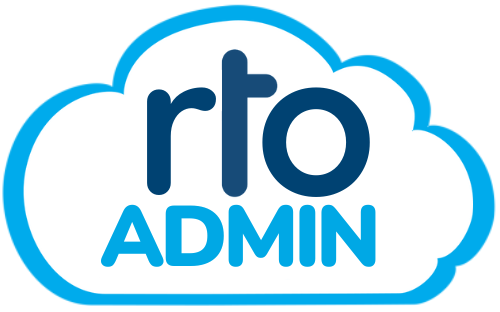Have you ever considered what it takes to establish a Registered Training Organisation (RTO)? The process can seem daunting, but the rewards of contributing to education and the workforce make it a worthwhile endeavor. Establishing an RTO might sound complex, but when broken down into manageable pieces, it becomes more approachable. Let’s explore the key considerations such as costs, compliance, and the all-important CRICOS registration that can take your training organisation to new heights.
Understanding the Basics of an RTO
Becoming an RTO offers a unique opportunity to deliver nationally and internationally accredited courses. Recognised under the Australian regulatory framework, an RTO ensures that learners receive quality education, whether it be through vocational training, upskilling, or reskilling programs.
Benefits of Forming an RTO
Starting an RTO is not just about compliance; it’s about the myriad of benefits that come with being a part of the national education ecosystem. Among the most compelling perks is the ability to access government funding, providing financial sustenance and growth opportunities. Registered organisations can engage more deeply with industries, enhancing their course offerings to align with workforce needs. Moreover, international reach becomes possible with CRICOS registration, unlocking new global markets and broadening educational impact.
The Global Advantage: CRICOS Registration
One of the strategic advantages of registering as an RTO is the potential to attract international students. The Commonwealth Register of Institutions and Courses for Overseas Students (CRICOS) enables Australian RTOs to market their courses globally. Participating in international education markets not only boosts your institution’s revenue but also fosters cultural diversity, enriching the learning environment for domestic students as well.
Financial Considerations: Planning Your Investment
Establishing an RTO requires careful financial planning, as costs can vary significantly depending on multiple factors. Designing an efficient budget allocation strategy from the outset is crucial to ensure long-term sustainability.
Initial Costs and Ongoing Expenses
The financial costs of establishing an RTO range from initial setup fees to ongoing operational expenses. Initial costs include registration fees, legal consultations, staff recruitment, and infrastructure development. Ongoing expenses could involve salaries, marketing, and compliance maintenance—each demanding a financial strategy that aligns with your growth objectives.
| Expense Type | Examples |
|---|---|
| Initial Costs | Registration fees, legal fees, infrastructure |
| Ongoing Expenses | Staff salaries, marketing, compliance updates |
Funding Opportunities and Financial Viability
Beyond the basic expenses, securing funding can significantly impact an organisation’s capacity to grow. Government funding, which RTOs can access, is a valuable resource to mitigate the financial burdens of establishing and running a training organisation. Nevertheless, achieving financial viability is about more than external funding; it’s also about optimizing your internal resource allocation and choosing programs with high demand.
Ensuring Compliance: Meeting Regulatory Standards
RTOs are subject to stringent regulatory standards enforced by the Australian Skills Quality Authority (ASQA). Understanding these regulatory requirements is pivotal for maintaining operational integrity and providing quality education.
Understanding ASQA’s Role
ASQA plays a critical role in overseeing RTO compliance, ensuring each organisation adheres to the national standards for training services. The authority conducts regular audits to guarantee educational quality and adequate resources, safeguarding both student interests and institutional reputations.
Registration Process and Key Requirements
Registering with ASQA involves a meticulous process of compiling comprehensive documentation. Your submission should cover various aspects of your organisation’s operation, from course content to compliance with legislative requirements. Keep in mind that once submitted, changes can be challenging to implement without extensive review, underscoring the need for thorough preparation.
Legislative Compliance
Beyond initial registration, ongoing legislative compliance is essential. An RTO must continuously adhere to legislative updates to maintain its registration and ability to deliver accredited training programs. This involves regular policy reviews and updates to ensure the institution’s policies remain aligned with both national and state educational requirements.
Choosing the Right Courses and Skills
As you consider the training packages to offer, aligning them with market demand is crucial for securing long-term viability. This choice determines your ability to attract students and ensure that your courses provide worthwhile career advancement opportunities.
Aligning with Industry Demand
Selecting courses should be inherently linked to industry needs and trends. Performing market research to understand key areas where skill gaps exist can offer insights into which courses will resonate more with potential students, ensuring successful enrolment numbers and student outcomes.
Expanding Your Existing Services
If you’re already providing educational services, expanding your offerings to include RTO credentials can be a natural progression. Enhancing your courses with nationally recognised qualifications not only improves the value proposition for your learners but also enhances your institutional reputation in the market.
Implementing Effective Management Systems
Developing an efficient administrative and academic structure underpins any successful RTO. Integrating suitable management systems is instrumental for smooth operational activities, student engagement, and compliance management.
AVETMISS-Compliant Student Management System (SMS)
An RTO must operate with an AVETMISS-compliant Student Management System to effectively manage enrolment, financial transactions, and compliance data. This system also plays a crucial role in reporting and record-keeping, underpinning your organisation’s credibility and accountability.
Integration with Learning Management Systems (LMS)
In the age of digital transformation, an LMS is indispensable for the delivery of online learning. Integrating SMS with a robust LMS not only facilitates seamless online course delivery but also enhances the overall student experience by providing access to learning materials, assessments, and communication tools.
Planning for a Successful Launch
Launching an RTO isn’t merely about the operational setup; it’s about fostering a strong and impactful entrance into the educational landscape.
Marketing and Outreach Strategies
To effectively attract students, especially international candidates through CRICOS registration, robust marketing strategies are necessary. Developing a clear brand message that highlights the unique aspects of your educational services can set you apart in a competitive market. Engaging with online platforms, social media, and industry networks allows you to reach a broader audience.
Building Industry Partnerships
Collaborating with industry partners is vital for ensuring that your training programs meet workforce demands. These partnerships can also provide invaluable opportunities for student placements, internships, and employment prospects post-graduation—an attractive feature for potential enrollees.

Conclusion
Establishing a Registered Training Organisation involves multifaceted considerations including financial planning, compliance adherence, effective management, and strategic course selection. Yet, the potential benefits to education, both nationally and globally, make the journey rewarding. Careful planning, dedication to quality, and a clear understanding of industry needs will guide you toward successfully contributing to the workforce and educational landscape. As you embark on this entrepreneurial adventure, the impact of your training programs can be profound, opening doors for countless learners and setting a benchmark in vocational education.


